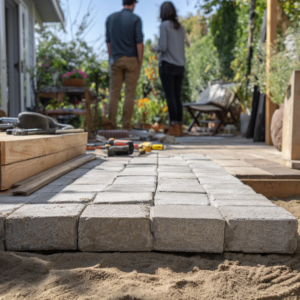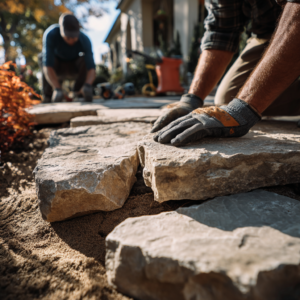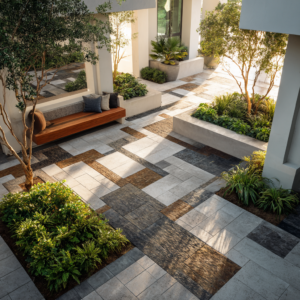Brick pavers are a timeless addition to any outdoor space, offering durability, aesthetic appeal, and a classic charm that complements both modern and traditional designs. However, these pavers can accumulate dirt and stains over time – and learning how to clean brick pavers with muriatic acid can be powerful knowledge.
While regular maintenance can keep them looking fresh, sometimes a deeper clean is necessary. This is where muriatic acid comes into play: it can restore their original beauty, although it also requires careful handling and a clear understanding of the process.
In this article, we’ll walk you through a step-by-step process of using muriatic acid to clean brick pavers safely and effectively. From preparation and safety measures to application and aftercare, find all the necessary information to tackle even the toughest stains!
Jump to:
The role of muriatic acid in cleaning brick pavers
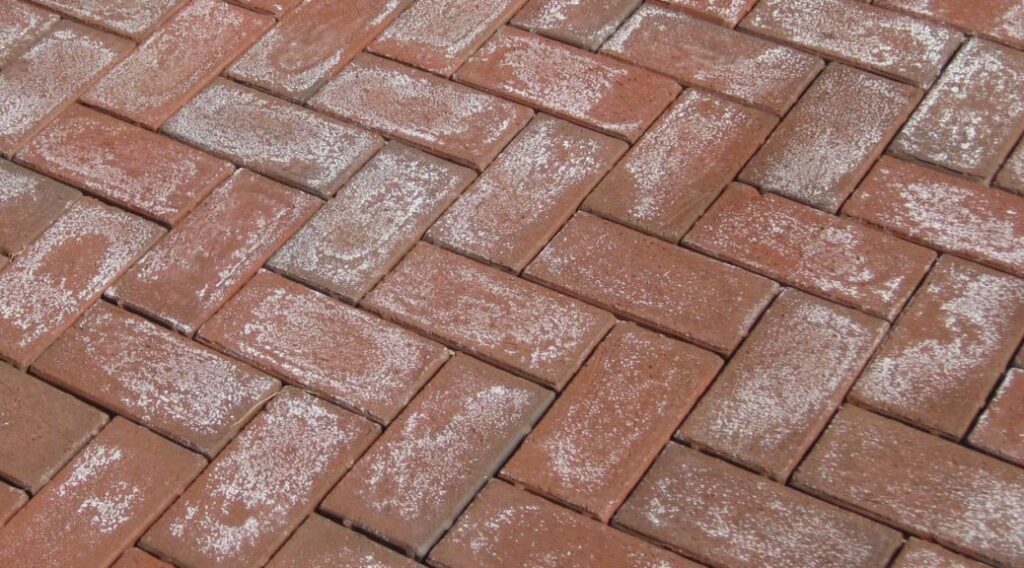
Muriatic acid, also known as hydrochloric acid, is a powerful chemical commonly used for cleaning masonry surfaces, including brick pavers. Its acidic nature makes it highly effective at dissolving stubborn stains, mineral deposits, and efflorescence.
However, its potency also means it must be handled with extreme care. Improper use can damage the pavers, harm surrounding vegetation, and pose health risks to the user.
Before diving into the cleaning process, it’s essential to assess whether muriatic acid is the right solution for your specific situation. For instance, if the pavers are only lightly soiled, a milder cleaning solution or pressure washing might suffice. However, for severe staining or efflorescence, muriatic acid can be a game-changer.
Preparing for the cleaning process
Preparation is key to ensuring a safe and effective cleaning experience. Start by gathering the necessary materials: muriatic acid, a plastic watering can or sprayer, a stiff-bristle brush, protective gear (gloves, goggles, and a mask), and a garden hose with a spray nozzle. It’s also advisable to wear old clothing and shoes to avoid damage from accidental spills.
Next, clear the area around the pavers. Remove any furniture, potted plants, or decorative items. Cover nearby vegetation with plastic sheeting to protect it from acid splashes. If the pavers are located near a water source, such as a pond or pool, take extra precautions to prevent contamination.
Before applying the acid, thoroughly wet the pavers with water – this step is crucial because it prevents the acid from penetrating too deeply into the bricks, which could cause damage. Additionally, wetting the surface ensures a more even application of the acid solution.
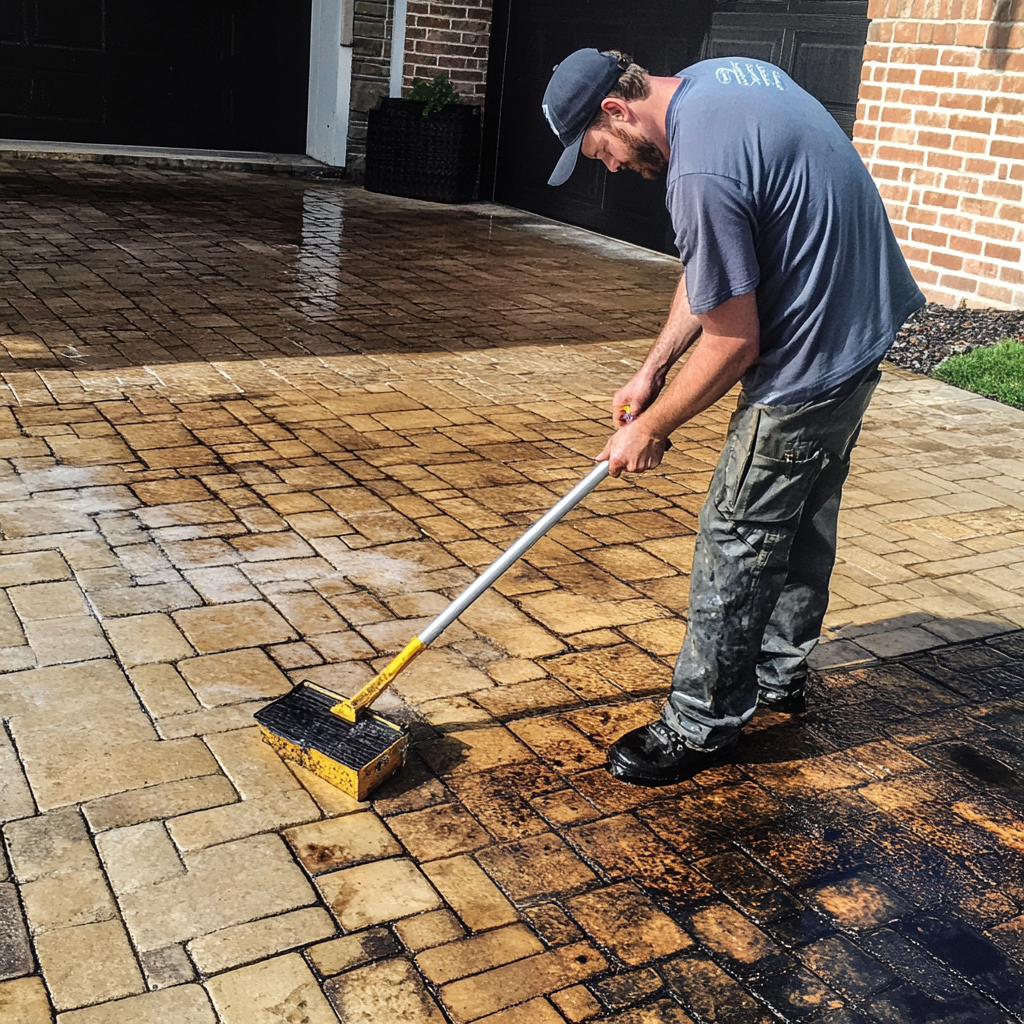
Mixing and applying the muriatic acid solution
Muriatic acid should always be diluted before use. A common ratio is one part acid to ten parts water, but this can vary depending on the severity of the stains.
Always add the acid to the water, not the other way around, to prevent a dangerous chemical reaction. Stir the mixture carefully using a plastic or wooden tool – never metal, as it can react with the acid.
Once the solution is ready, apply it to the pavers using a plastic watering can or sprayer. Work in small sections to ensure even coverage and avoid letting the solution dry on the surface.
After applying the acid, use a stiff-bristle brush to scrub the pavers, paying special attention to heavily stained areas. This mechanical action helps the acid penetrate and break down the stains more effectively.
Read also: How to restore color to brick pavers – a complete guide!
Rinsing and neutralizing the surface
After scrubbing, rinse the pavers thoroughly with a garden hose. This step is critical to remove all traces of the acid and prevent it from continuing to react with the surface.
For added safety, consider neutralizing the pavers with a baking soda solution (one cup of baking soda per gallon of water). This helps to counteract any remaining acidity and protect the pavers from potential damage.
Once the pavers are rinsed and neutralized, allow them to dry completely. You may notice that some stains or discoloration remain after the first application. In such cases, the process can be repeated, but it’s important to avoid overusing muriatic acid, as it can erode the surface of the pavers over time.
Safety tips and best practices
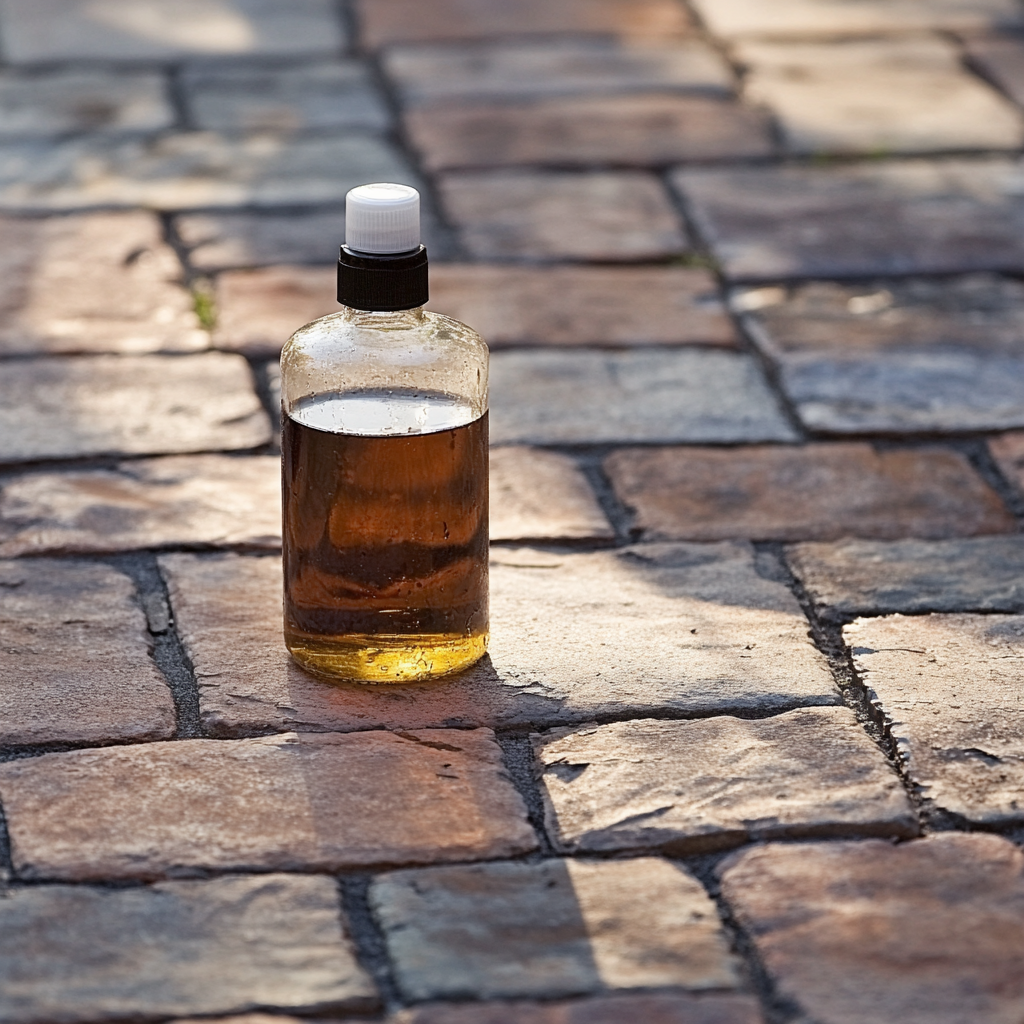
Working with muriatic acid requires strict adherence to safety protocols. Always wear protective gear, including gloves, goggles, and a mask, to shield yourself from fumes and splashes. Work in a well-ventilated area to minimize inhalation of harmful vapors. If the acid comes into contact with your skin, rinse immediately with plenty of water and seek medical attention if necessary.
It’s also important to store muriatic acid properly. Keep it in its original container, tightly sealed, and away from children and pets. For more detailed safety guidelines, refer to this resource on chemical safety.
When to call a hardscape professional
While cleaning brick pavers with muriatic acid can be a DIY project, there are situations where professional assistance is advisable. For instance, if the pavers are extensively damaged or if you’re unsure about handling the acid safely, it’s best to consult a hardscape specialist.
Professionals have the expertise and equipment to achieve optimal results without risking damage to the pavers or themselves.
And here at JS Brick, we specialize in hardscape maintenance and restoration. Our team is equipped to handle even the most challenging paver cleaning projects, ensuring your outdoor spaces look their best.
So, if you’re considering a professional touch and live around Sarasota County, FL, don’t hesitate to contact us for a consultation! We’ll be waiting for you.

